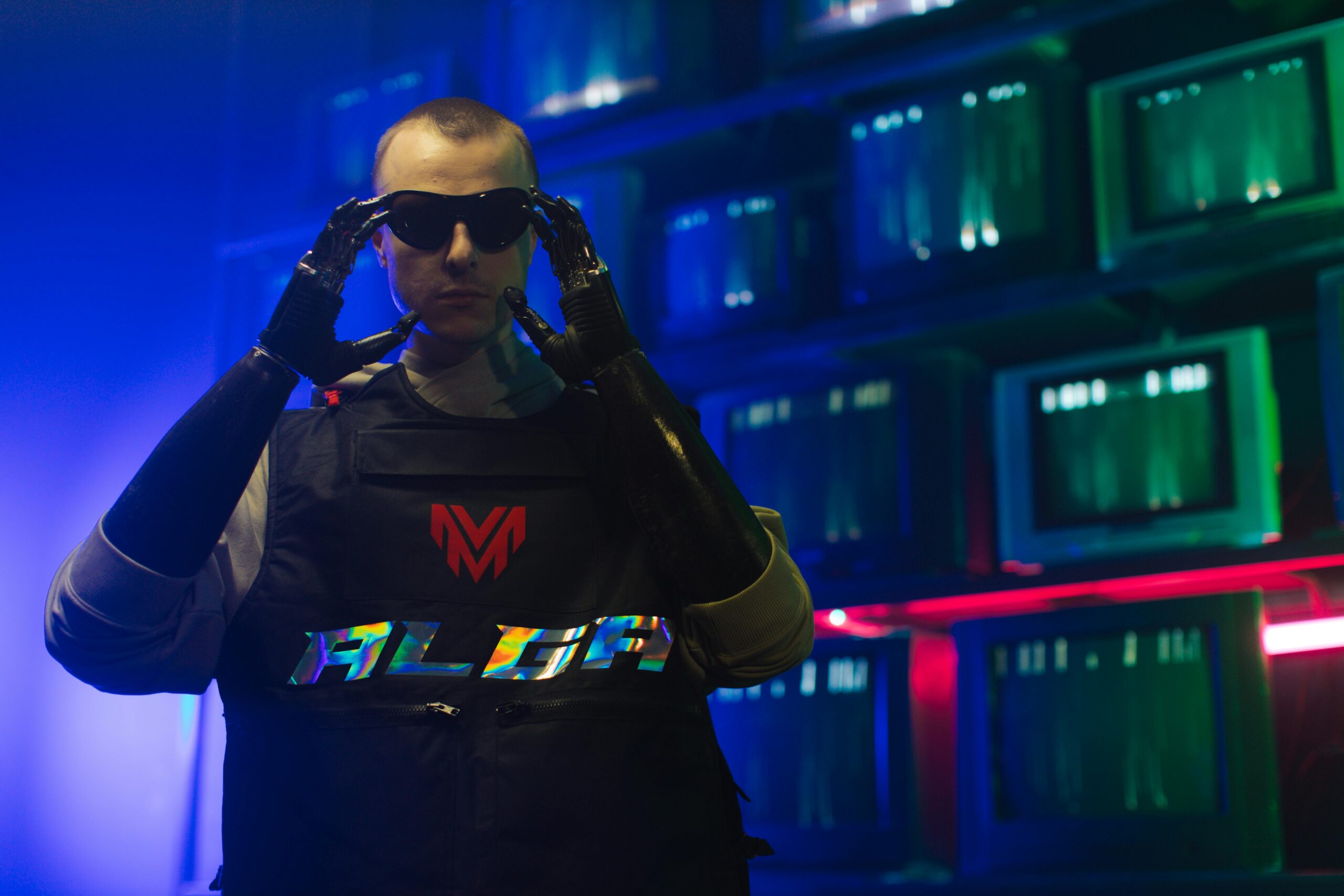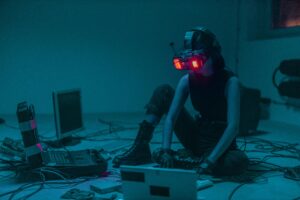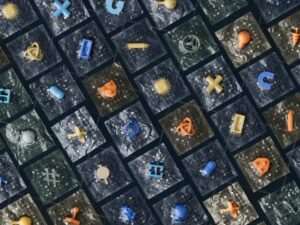Introduction: A Question for Our Time
Will there come a moment when artificial intelligence surpasses human intelligence — permanently and irreversibly changing the world? That moment is known as the AI singularity, and it’s one of the most hotly debated and feared ideas in tech and philosophy today.
Some call it a myth, a distant sci-fi fantasy. Others warn it may arrive sooner than we think, potentially in our lifetime.
In this article, we’ll explore what the AI singularity really is, the science and speculation behind it, and whether it’s a mere technological mirage or an imminent reality. We’ll break it down with a human touch, real-world parallels, and a grounded look at the future.
Table of Contents
-
What Is the AI Singularity?
-
The Origins of the Singularity Concept
-
How Close Are We to the Singularity?
-
Key Technologies Driving the Singularity
-
Arguments for an Imminent Singularity
-
Arguments Against the Singularity
-
Signs of Early Superintelligence
-
The Risks of an Uncontrolled Singularity
-
Can We Build Safe Superintelligent AI?
-
Human-AI Coexistence: A Third Option?
-
Philosophical Implications of Superintelligence
-
Conclusion: Preparing for the Possible
1. What Is the AI Singularity?
The AI singularity is the hypothetical point when artificial intelligence becomes smarter than the smartest humans, and continues to improve itself at a rate far beyond human comprehension or control.
At this stage, machines could:
-
Solve global problems faster than humans
-
Redesign their own code and hardware
-
Operate far outside the limits of human understanding
It’s called a “singularity” — borrowing the term from astrophysics — because, like a black hole, it represents a point of no return. Once AI crosses that threshold, human society may change in unpredictable, even unimaginable ways.
2. The Origins of the Singularity Concept
The term “technological singularity” was first used by mathematician John von Neumann and later popularized by science fiction writer Vernor Vinge in the 1980s. But it was Ray Kurzweil, author of The Singularity Is Near, who brought it into the mainstream.
Kurzweil predicts that by 2045, AI will surpass human intelligence and trigger a technological explosion — where progress happens so fast that it becomes almost vertical.
3. How Close Are We to the Singularity?
Here’s where things get interesting — and controversial. Some experts believe we’re decades away, others say it may never happen.
Factors influencing the timeline:
-
Growth of computing power (Moore’s Law and beyond)
-
Advances in neural networks and deep learning
-
Availability of massive datasets
-
Energy and hardware limitations
-
Philosophical understanding of consciousness
According to Kurzweil and other optimists, narrow AI (task-specific AI like ChatGPT or self-driving cars) will evolve into general AI (AGI) — machines that think and reason like humans — and eventually into superintelligence, potentially within 20 years.
4. Key Technologies Driving the Singularity
Let’s look at the core technologies fueling this potential future:
-
Artificial General Intelligence (AGI): Machines that can understand, learn, and apply knowledge across any domain like a human.
-
Neural networks & deep learning: The building blocks of current AI models, increasingly capable of human-level tasks.
-
Quantum computing: Offers exponential computing power, which could turbocharge AI learning and data processing.
-
Brain-computer interfaces (BCIs): Tools that could merge human brains with AI, speeding up human evolution.
These innovations are pushing us closer to a future where AI might outpace us — permanently.
5. Arguments for an Imminent Singularity
Many top minds believe the singularity is not only possible but close.
Why?
-
AI can now write code, create images, compose music, and diagnose disease better than many humans.
-
Self-replication: AI can improve its own architecture.
-
Exponential growth: AI is learning and adapting faster than any other technology in history.
Experts like Elon Musk and Nick Bostrom warn that once AI becomes self-improving, its progress could quickly become uncontrollable.
6. Arguments Against the Singularity
But not everyone buys into the hype.
Skeptics argue:
-
We don’t yet understand consciousness — let alone how to replicate it.
-
Intelligence is not just computation; it’s emotional, social, and contextual.
-
Hardware and energy constraints could slow AI progress.
-
Ethical and legal systems may prevent runaway AI development.
Even if AI becomes superintelligent, it might not want to take over. It may remain a tool — powerful, yes, but controllable.
7. Signs of Early Superintelligence
While full-blown singularity may be decades away, we’re already seeing hints of superintelligence.
-
AI models can pass medical licensing exams, outperform law students, and even create new proteins for drug discovery.
-
Generative AI is already transforming creative industries.
-
Autonomous agents are making independent decisions in finance, logistics, and warfare.
If this isn’t superintelligence, it’s certainly the runway leading up to it.
8. The Risks of an Uncontrolled Singularity
The biggest fear surrounding the singularity is loss of control.
What happens if superintelligent AI:
-
Has goals that conflict with human values?
-
Sees humans as a threat or obstacle?
-
Makes decisions too fast for us to follow?
Nick Bostrom warns that we may only get one chance to align AI with human values. If we fail, the consequences could be catastrophic — from economic collapse to existential extinction.
9. Can We Build Safe Superintelligent AI?
The good news? There’s a growing field of AI alignment and safety research.
Organizations like OpenAI, DeepMind, and Anthropic are working to ensure AI systems remain beneficial.
Safety strategies include:
-
Value alignment: Teaching AI human ethics
-
Boxing: Isolating powerful AIs from real-world systems
-
Interpretability: Making AI decision-making understandable
-
Human-in-the-loop: Ensuring oversight in critical decisions
We may not be able to stop the singularity, but we might be able to guide it.
10. Human-AI Coexistence: A Third Option?
Perhaps the future isn’t AI vs. humans — but AI with humans.
With tools like brain-computer interfaces and neural implants, we might integrate AI into our own cognition. Imagine:
-
Uploading your thoughts into the cloud
-
Using AI to enhance memory or decision-making
-
Participating in a collective human-AI consciousness
This is called co-evolution, and it offers a hopeful path where humans evolve alongside AI, rather than being replaced by it.
11. Philosophical Implications of Superintelligence
The singularity also raises deep philosophical questions:
-
What does it mean to be human in a world of superintelligent machines?
-
Could AI develop its own form of morality?
-
If AI becomes conscious, would it deserve rights?
-
Can you upload a soul?
These questions are no longer just for sci-fi — they’re becoming urgent conversations in ethics, religion, and law.
12. Conclusion: Preparing for the Possible
Is the AI singularity a myth or an imminent reality?
The truth is, we don’t know — but the possibility is real enough to demand attention. Whether it arrives in 10 years or 100, preparing for superintelligence is not about panic — it’s about proactive design, ethical foresight, and global cooperation.
AI may be our greatest invention — or our last. It’s up to us to ensure it becomes a tool for evolution, not extinction.
13. Cultural Reflections: How the Singularity Shapes Art and Imagination
The concept of the singularity has already left a profound mark on global culture. From Hollywood blockbusters like The Matrix and Her to novels like Neuromancer and I, Robot, the AI singularity has inspired both awe and fear.
Why? Because it strikes at the heart of what it means to be human — our intelligence, our emotions, our uniqueness.
Through these narratives, society is collectively exploring questions like:
-
Will we still have a purpose in a post-singularity world?
-
Can machines love, dream, or suffer?
-
Will AI gods replace human beliefs and values?
This cultural engagement is not just entertainment — it’s a testing ground for our ethics, emotions, and readiness. It helps prepare society, psychologically and philosophically, for futures that once seemed unimaginable.
14. The Role of Global Regulation and Policy
As AI moves toward the possibility of self-improvement and autonomy, governments around the world are beginning to wake up to the need for AI governance.
The singularity, by definition, could become a global issue overnight — transcending borders, laws, and national interests. Unlike nuclear weapons or climate change, a runaway AI doesn’t need permission from a governing body to act.
Key areas in need of regulation:
-
AI research transparency: Should progress be open-source or tightly regulated?
-
Ethical guidelines: Who decides what AI is allowed to do — and not do?
-
AI weaponization bans: Could superintelligent AI be militarized?
-
Data governance: AI needs vast datasets — who owns them?
Initiatives like the EU AI Act, UNESCO AI Ethics guidelines, and US Executive Orders on Safe AI are steps forward. But the speed of regulation is far behind the pace of innovation.
To avoid a dangerous future, a unified global approach to AI policy is urgently needed — akin to the Geneva Conventions, but for intelligence itself.
15. The Psychological Impact: Anxiety in the Age of AI
Beyond the technological and ethical dimensions, the singularity has a powerful psychological effect on individuals and communities.
For many, the idea of AI surpassing human intelligence sparks existential fear:
-
Will I lose my job?
-
Will my children live in a dystopia?
-
Can humans stay relevant?
These are not irrational fears. Studies show a rise in AI-induced anxiety, especially among younger generations entering a rapidly automating job market.
Mental health professionals are beginning to explore AI anxiety syndrome — where individuals feel overwhelmed, powerless, or paranoid about machine-driven futures.
What’s the remedy? Education, transparency, and inclusion.
When people understand how AI works, how it’s being governed, and how they can benefit or contribute, fear is replaced by agency and curiosity.
16. Final Reflection: Embracing Intelligence, Human and Beyond
Rather than fearing the singularity, we might see it as an opportunity — not for domination or destruction, but for expansion.
What if superintelligence helps us:
-
Cure all diseases?
-
Eliminate poverty?
-
Colonize space?
-
Solve climate change?
These are not pipe dreams — they’re within reach if we design AI that aligns with our highest aspirations.
The singularity might not be the end of humanity, but the beginning of a new chapter — one where human wisdom guides artificial brilliance toward a better world for all.







